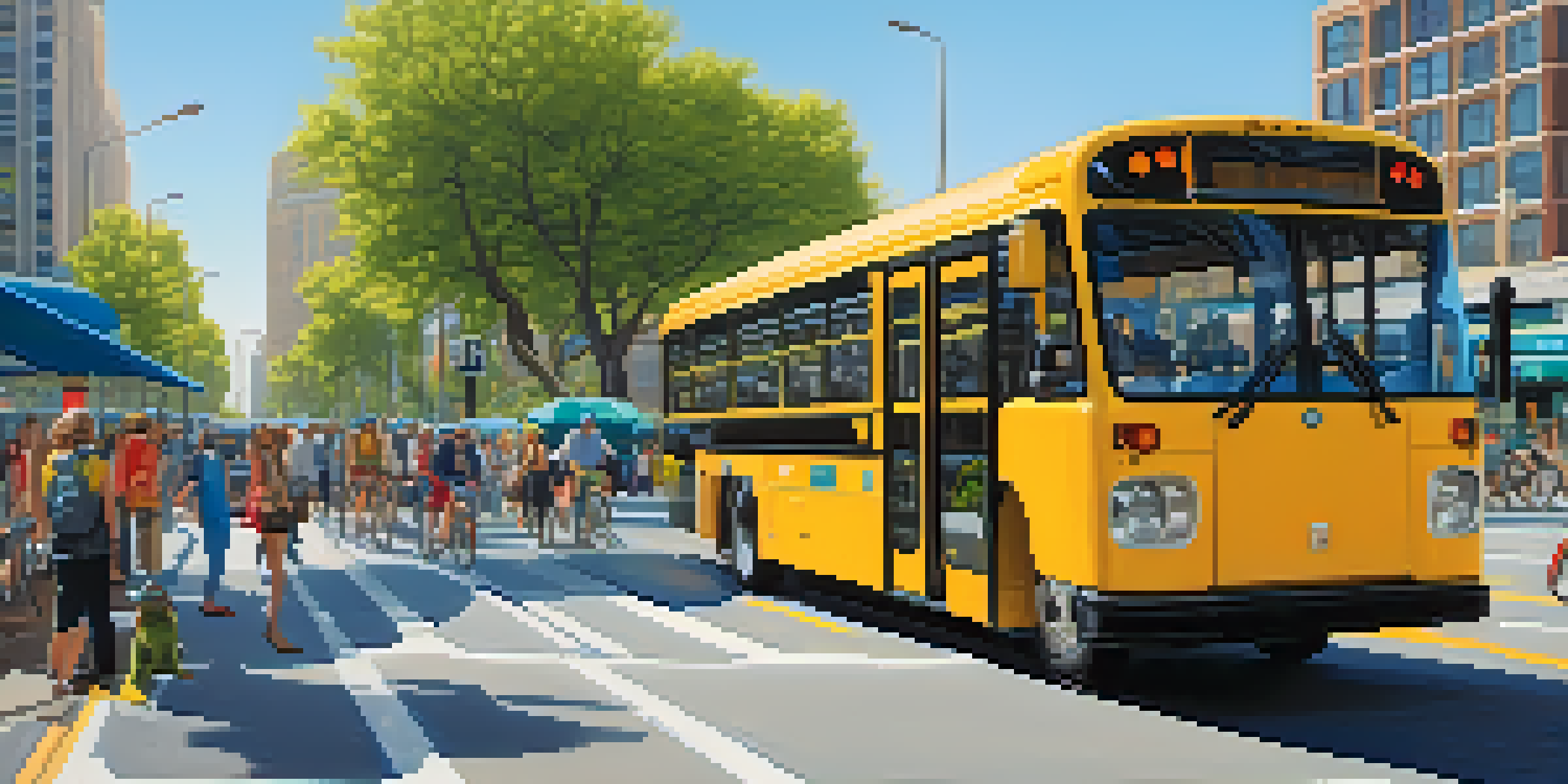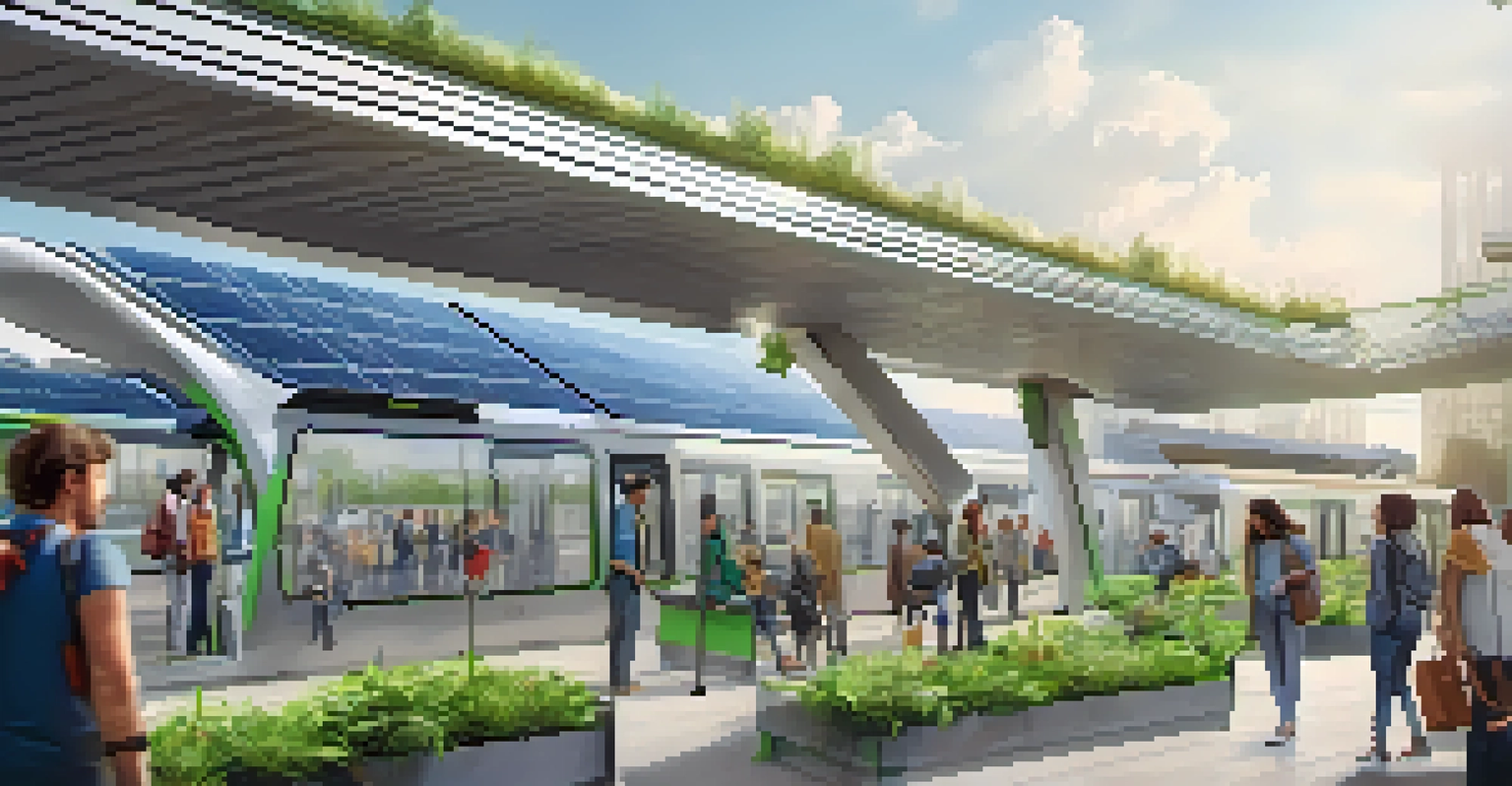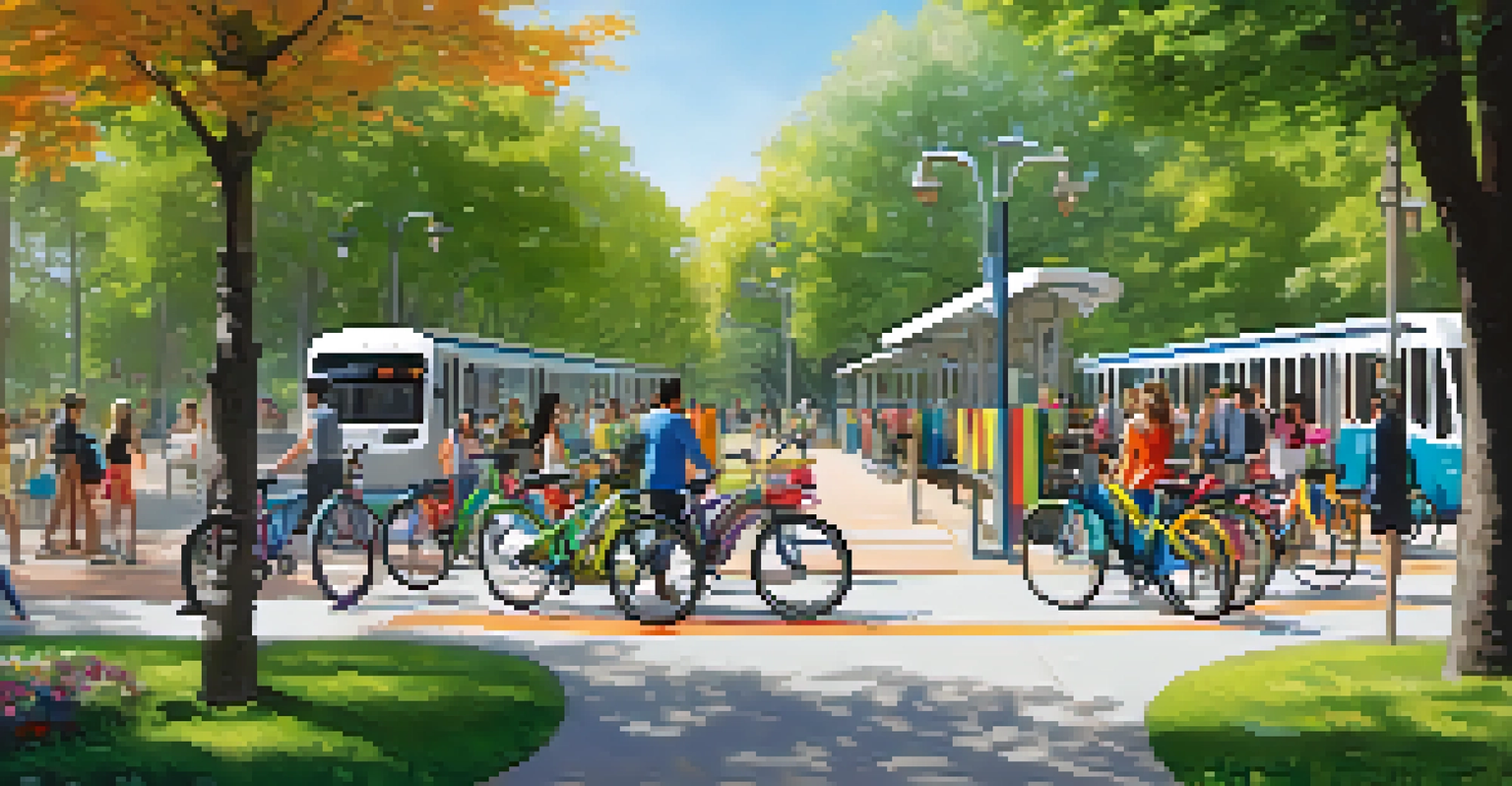Public Transportation Innovations: A Sustainable Future

The Rise of Electric Buses in Urban Areas
Electric buses are transforming the landscape of public transportation, providing a cleaner alternative to traditional diesel-powered vehicles. These eco-friendly options significantly reduce greenhouse gas emissions, contributing to improved air quality in cities. Moreover, as battery technology advances, electric buses are becoming more efficient, with longer ranges and quicker charging times.
The future of transportation is not about the cars we drive, but the communities we build.
Cities like Los Angeles and Shenzhen are leading the charge, with Shenzhen converting its entire fleet to electric. This shift not only supports sustainability goals but also lowers operational costs over time due to reduced fuel and maintenance expenses. As more cities adopt electric buses, public perception is changing, showcasing the benefits of investing in cleaner transport.
As we look towards the future, the integration of electric buses can serve as a catalyst for broader sustainable practices in urban planning. The success of this transportation innovation underscores the importance of governmental support, funding, and a commitment to reducing carbon footprints on a larger scale.
Smart Public Transit Systems: A Tech Revolution
Smart transit systems are revolutionizing the way we navigate public transportation. With the help of mobile apps, real-time tracking, and data analytics, commuters can now enjoy a more seamless travel experience. This technology not only enhances convenience but also encourages more people to opt for public transit over personal vehicles.

For instance, cities like Amsterdam have implemented smart traffic lights that communicate with public transport vehicles, optimizing routes and reducing wait times. Such innovations can lead to increased ridership, which is crucial for reducing congestion and emissions. Furthermore, transit authorities can utilize data to better understand commuter patterns and improve service efficiency.
Electric Buses Enhance Urban Transit
Cities are adopting electric buses to reduce emissions and operational costs while improving air quality.
By embracing technology, public transportation systems can evolve to meet the demands of modern urban life. As these smart systems gain popularity, they pave the way for a future where public transport is not only efficient but also an attractive choice for daily commuting.
The Role of Bike-Sharing Programs in Urban Mobility
Bike-sharing programs are emerging as a popular addition to urban transportation networks, promoting a healthy and sustainable mode of travel. These programs provide an accessible way for residents and tourists alike to explore cities while reducing reliance on motor vehicles. As cities invest in bike lanes and infrastructure, cycling becomes a safer and more appealing option.
Sustainability is no longer about doing less harm. It’s about doing more good.
For example, cities like Copenhagen have seen a significant increase in cycling as a primary mode of transport, resulting in reduced traffic congestion and pollution. Bike-sharing not only complements public transit by offering last-mile solutions but also encourages a culture of active living. This shift can lead to healthier populations and lower healthcare costs in the long run.
The integration of bike-sharing programs into public transport systems can create a more cohesive urban mobility strategy. By fostering partnerships between transit authorities and bike-sharing companies, cities can enhance their transportation options and contribute to a more sustainable future.
Innovative Rail Systems: High-Speed and Light Rail
High-speed and light rail systems are reshaping the way we think about long-distance travel and urban commuting, respectively. High-speed trains, like those in Japan and France, offer rapid transit options that can compete with air travel, reducing carbon emissions associated with flying. This innovation not only shortens travel times but also promotes economic growth by connecting regions more efficiently.
On the other hand, light rail systems bring public transport closer to communities, making it easier for residents to access jobs, schools, and leisure activities. Cities such as Portland have successfully integrated light rail, demonstrating how effective transit can stimulate local economies and encourage urban development. The benefits extend beyond transportation, enhancing the overall quality of life for residents.
Smart Transit Systems Boost Efficiency
Integrating technology into public transit enhances convenience and encourages more commuters to choose public transport.
As countries invest in these rail innovations, they are laying the groundwork for a more sustainable transport ecosystem. The combination of high-speed and light rail can significantly decrease road congestion and reliance on fossil fuels, making them vital components of future urban mobility strategies.
The Impact of Autonomous Vehicles on Public Transit
Autonomous vehicles (AVs) hold great promise for revolutionizing public transportation. By removing the need for human drivers, AVs can optimize routes and schedules based on real-time data, potentially increasing efficiency and reducing operational costs. This innovation could lead to a more flexible public transport system that adapts to commuter needs.
Cities like San Francisco are already testing autonomous shuttles in limited capacities, showcasing how these vehicles can integrate with existing transit networks. As technology continues to advance, the widespread adoption of AVs could significantly reduce traffic congestion and emissions, transforming urban mobility. However, it’s crucial to address safety concerns and regulatory challenges to ensure successful implementation.
The rise of autonomous vehicles in public transit could also lead to new opportunities for underserved communities, providing access to transportation where traditional services may not be feasible. By embracing AV technology, cities can work towards creating a more inclusive and sustainable transportation ecosystem.
Integrating Sustainable Practices in Public Transport Design
Sustainability in public transportation goes beyond just the vehicles; it also encompasses the design and infrastructure supporting these systems. From energy-efficient stations to green roofs and solar panels, integrating sustainable practices into transport design can minimize environmental impact. Such initiatives not only enhance the aesthetic appeal of transit hubs but also contribute to energy savings.
Cities like Seattle are leading the way by incorporating sustainable building materials and designs in their transit projects. This approach not only reduces the carbon footprint of public transport facilities but also sets a standard for future developments. By prioritizing sustainability in design, transit authorities can demonstrate their commitment to environmental responsibility and community well-being.
Holistic Approach to Future Transport
A comprehensive strategy that combines various transport modes and sustainable practices will create a seamless travel experience.
Moreover, designing public transport systems with sustainability in mind can foster community engagement and pride. When residents see their transit systems reflecting eco-friendly values, they are more likely to support and utilize these services. This connection can ultimately lead to a culture of sustainability that permeates through the entire city.
The Future of Public Transportation: A Holistic Approach
The future of public transportation lies in a holistic approach that combines multiple innovations and sustainable practices. By integrating various modes of transport—like buses, trains, bike-sharing, and AVs—cities can create a seamless travel experience for commuters. This interconnectedness encourages greater usage of public transport, which is essential for reducing urban congestion and emissions.
As communities work towards a more sustainable transport future, collaboration among stakeholders is key. Transit authorities, local governments, and private companies must work together to create policies and initiatives that promote sustainable practices. This collaboration can lead to innovative solutions that address the unique challenges faced by different regions.

Ultimately, a holistic approach to public transportation not only benefits the environment but also enhances the quality of life for residents. By prioritizing sustainable and innovative solutions, cities can pave the way for a future where public transport is not only a necessity but also a preferred choice for all.